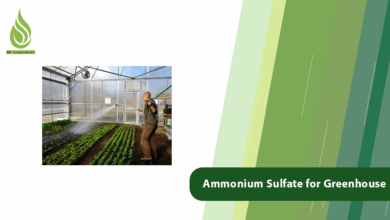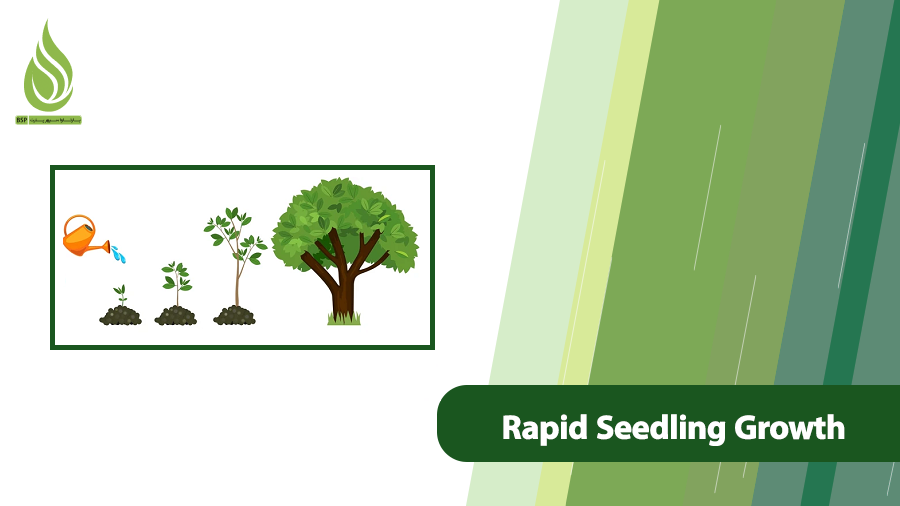
What Factors Influence the Rapid Growth of a Seedling or Tree?
Every gardener wants their seedlings to grow quickly and their trees to reach optimal growth. To achieve rapid growth in a seedling or tree, certain conditions must be met. One key factor is proper fertilization. In this article, we’ll explore the factors that promote fast growth in seedlings and trees and introduce fertilizers that support both height and width development.
Why Is Rapid Seedling Growth Important?
The growth of a seedling in its early years lays the foundation for its future development. The sturdy, towering trees we see today all started as small, fragile seedlings. When a seedling’s growth needs are met, its growth is maximized. Factors like sufficient water, proper sunlight, essential nutrients, and more must be provided for the seedling to thrive.
Seedling growth involves increases in height, canopy volume, and root development. These factors ensure that the tree will be strong, productive, and efficient in the future.
What Factors Influence the Rapid Growth of Seedlings and Trees?
Rapid growth of seedlings and trees is every gardener and farmer’s dream. Achieving this goal requires attention to several key factors. Below, we’ll explain the most important factors that promote faster and healthier growth of seedlings and trees.
Seedlings Genetics
The first step to growing successful seedlings is choosing the right variety. Some seedlings thrive in a range of conditions, while others are suited to specific environments and won’t grow well in just any setting. When buying seedlings, select ones that are compatible with your local environment. Purchase from reputable nurseries and always ask about the specific variety of the seedling you’re buying.
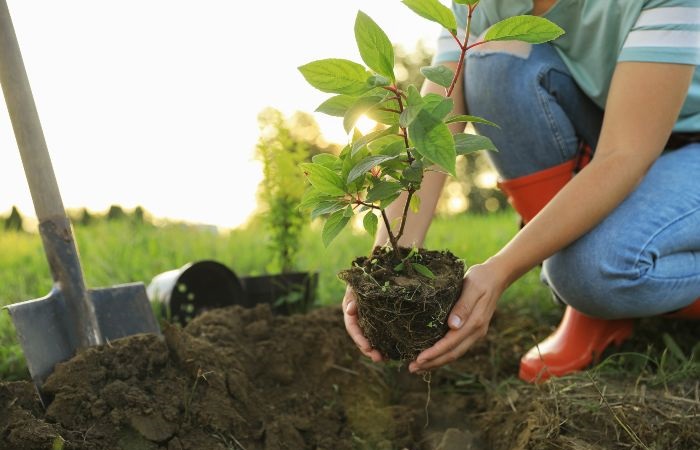
Soil Quality
Soil is where a tree’s roots take hold and the primary source of its nutrients. For rapid tree growth, the soil should have the following qualities:
- Good Drainage: The soil must allow excess water to drain easily to prevent water pooling around the roots.
- Proper Aeration: The soil should have enough pore space to allow air to reach the roots, enabling them to breathe effectively.
- Fertility: The soil must contain sufficient nutrients to meet the tree’s nutritional needs.
- Appropriate pH: The soil’s pH should be within the optimal range for the tree.
Sometimes the soil is unsuitable. You can always improve soil texture and structure to create the right conditions for rapid tree growth.
Using the Right Fertilizer for Rapid Seedling and Tree Growth
Fertilizers are nutrient supplements that provide trees with the essential elements they need to thrive. Using the right fertilizer promotes fast and healthy tree growth. Various fertilizers are available on the market, each containing different nutrients. To choose the best fertilizer, consider the type of tree and the soil conditions.
To boost seedling growth through fertilization, start by conducting a soil test to identify its needs and deficiencies. Generally, certain fertilizers are particularly effective at promoting faster growth. These include:
- Nitrogen Fertilizers: Nitrogen is arguably the most critical nutrient for thickening tree trunks, promoting height growth, and supporting branch and leaf development. Nitrogen is typically applied before a tree blooms. However, avoid overapplying nitrogen fertilizers, as this can disrupt soil balance. One popular nitrogen fertilizer is ammonium sulfate, which combines nitrogen and sulfur and is highly effective during the early stages of tree and plant growth.
- Sulfur Fertilizers: Sulfur helps regulate soil pH. By adjusting soil alkalinity, sulfur ensures that nutrients in the soil are properly available to the tree. It also plays a key role in maintaining the green color of seedlings and trees.
- Iron Fertilizers: Iron enhances photosynthesis, increases soil organic matter, and improves tree growth. Proper and timely use of iron fertilizers supports healthy tree development.
- Magnesium Fertilizers: Magnesium boosts chlorophyll production and photosynthesis, accelerating seedling growth. It also improves the metabolism of nitrogen and phosphorus, enhancing the overall effectiveness of fertilizers on trees.
- Phosphorus: Phosphorus is essential for rapid seedling growth. It supports energy production for cellular and metabolic activities in trees. This nutrient plays a critical role in root development and encouraging new shoots, which are vital for overall tree growth.
- Potassium: Seedlings are vulnerable and weak, especially in their early years when pests and diseases can have a greater impact. Potassium fertilizers are widely used to address this. Potassium helps regulate osmotic pressure in plants, increasing seedling resilience against diseases and adverse weather conditions. It also strengthens the woody structure of seedlings.
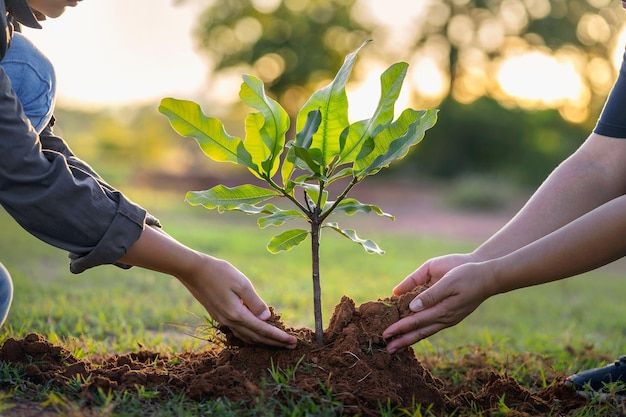
One common mistake in fertilizing is overdoing it. The delicate roots of young seedlings are sensitive and can be damaged or burned by excessive fertilizer use.
Proper Watering
Water plays a vital role in transporting nutrients from the soil to the tree and supporting its physiological processes. Insufficient water can lead to wilting, drying, and eventually, the death of the tree. On the other hand, overwatering can cause root rot and suffocate the tree. The amount of water needed varies depending on the tree type, climate, and soil conditions. On average, most young seedlings require watering every three days. For optimal growth and water conservation, drip irrigation is the best method.
Suitable Temperature
Seedlings planted in appropriate climate conditions thrive best. A tree suited for cold, mountainous climates won’t grow ideally in hot, tropical regions. The right temperature boosts enzyme activity and enhances photosynthesis. The optimal temperature for rapid tree growth varies by species, but most trees grow well in temperatures between 59°F and 86°F (15°C to 30°C).
Adequate Sunlight
Sunlight is the primary energy source for trees. Through photosynthesis, trees use sunlight, water, and carbon dioxide to produce their food. Insufficient light reduces photosynthesis, slowing tree growth. Therefore, choosing a planting location with ample sunlight is crucial. Generally, trees need at least six hours of direct sunlight daily for optimal growth.
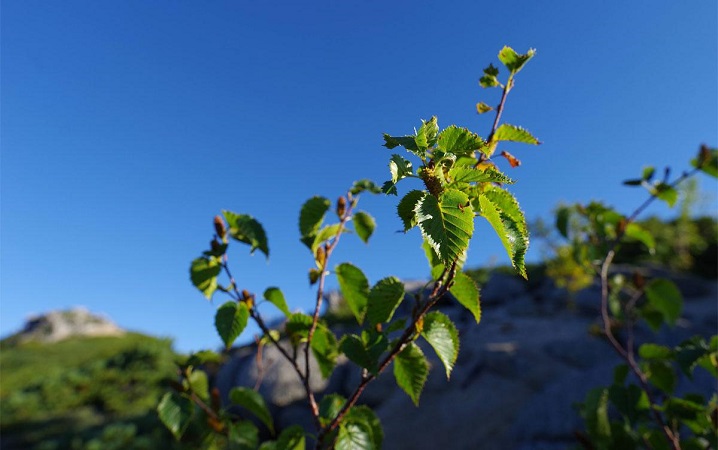
Note: At least 6 hours of direct daily sunlight is essential for effective photosynthesis.
Proper Tree Pruning
Once a tree has grown to a certain point, pruning should begin to maximize its growth. Excessive branches can reduce airflow and sunlight penetration. By pruning trees correctly, you remove diseased, unnecessary, or non-essential branches, allowing the remaining branches to grow more vigorously. This also improves air circulation and sunlight exposure among the branches.
Other Key Tips for Rapid Seedling and Tree Growth
- One common fertilization mistake is overdoing it. The best fertilizer for seedling growth depends on the soil’s needs and deficiencies. Always conduct a soil test before taking action. Soil test results will reveal which nutrients are needed, helping you avoid over- or under-fertilization.
- Never over-fertilize seedlings or trees. Excessive fertilization can harm seedlings, halt their growth, and even burn their roots, preventing further development. Some fertilizers may neutralize each other’s effects, so if you plan to mix fertilizers, ensure they are compatible.
- Care during a seedling’s growth period is critical. The healthier the environment in which a seedling matures, the faster it will grow and the more productive it will be in the future.
- Choosing the right seedling is one of the most important factors for rapid tree growth. A healthy, strong seedling has a straight, undamaged stem and healthy roots free of knots or rot. The seedling should have strong, healthy buds and a height appropriate for its age. Purchasing from reputable, licensed nurseries can help you select the right seedling.
- Controlling pests and diseases is essential to prevent stunted tree and plant growth. Common pests include aphids, mites, and leaf-eating worms. When trees are affected by pests, use balanced pesticides and fungicides to manage the issue.
- When planting seedlings, maintain proper spacing between them. Adequate spacing ensures that as trees grow, air can still circulate freely between them. Improper spacing can restrict growth by limiting the space trees need to thrive.
